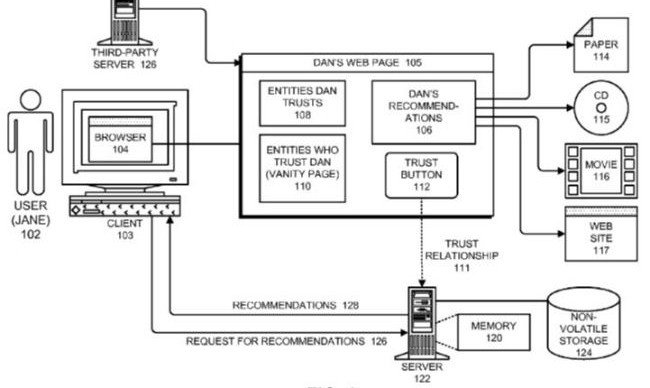Google had its latest patent to obtain signals from trusted sources granted on the 24th June 2014. What does this mean for the inbound community?
After recently reading a great post from Bill Slawski at www.seobythesea.com ‘Move over TrustRank, Make way for TrustButtons‘ I was thinking about several points he made in his post.
As an overview, Google’s patent is designed to give Google an extra advantage when looking at sites within its results and deciding whether they’re trustworthy or legitimate. It seems that Google is going to do this by getting personal, very personal.
Firstly if you wanna check out more about the patent itself you can read the full description here. Invented by Ramanathan V. Guha and assigned to Google it was filed in September 2012.
So let’s take a look a Bill’s bullet points individually and breakdown what I think this means:
Receiving input directly from the searcher indicating the user trusts recommendations associated with the entity (such as in the pressing of a “trust†button – though an actual button might not be used);
I’m not convinced we’ll see a Google trust button as manipulation from SEOs would be imminent. However, I think we can safely say that Google has access to this information already and is using it in their ranking algorithm through social signals.If an influencer in a particular industry shares via Google +, Twitter, Facebook etc, Google can see and utilise this data to drive its decisions of trust.
So we’re not going to be embedding a Google trust button any time soon however it does make sense to ensure your site can be easily shared on the social platforms most used in your industry. This is simple stuff, anything like this would work.

The next two points, I’ve grouped together as I think it makes sense to do so:
Using a web crawler to examine web pages to locate information indicating that the user trusts recommendations associated with the entity;
Examining web visitation patterns of the user and inferring from the web visitation patterns that the user trusts recommendations associated with the entity; or
Okay so web visitation patterns; we can assume this means looking at browser history and potentially cross-referencing this against other industry peers in your Circles, Groups or Pages. Simply if me and the rest of the SEO community are spending large amounts of time and sharing content on Moz.com then Google can assume reasonable trust this site for this vertical.
Combine this with traditional signals such as time on site, bounce rate and page interaction, and you have a real concoction of trust signals for Google to play with.
So what’s the solution to this point? Well I’m gonna back and bang the same old drum. Create content that your users can engage & interact with…There it is, the single most common SEO recommendation – I’m sorry!
Examining computer-based records belonging to the user, such as an email contact list or an instant-messaging chat list, and inferring from the computer-based records that the user trusts recommendations associated with the entity.
Finally then, a rather scary thought of Google examining computer-based records. I also believe this is a reference to users’ email contacts, similar to your other platforms i.e Google Circles to cross reference sites against certain usages.
So, to explain; I have Joe Blogs as an email contact and he also likes looking at www.volksworld.com because he has an air cooled bus. Google sees that both me and Joe spend a few hours a week on the site sharing and engaging with the content…Bing!! Google can now see that www.volksworld.com is pretty trustworthy, even better if all our friends, followers and connections are in the world of classic cars.
Further to this will Google use only Gmail data or can they see my Apple mail? Has anyone read the T&C’s recently? Anyhow the same principles apply. If Distilled send me a newsletter and I open it and engage with it along with other people in my contact list, Google can trust that the content from the site is good, building those trust signals.
The solution to this is simple; implement a call to action on your blog or newsletter to encourage users to subscribe. Get the visibility and obviously with your amazing content you can watch the trust flow.
Finally I think potential personalisation could be influenced by traditional factors. For example a link from a ‘creditable source’ means followers and friends of people in the credible source’s ‘social groups’ are shown your content higher in the rankings as Google can trust creditable sources’ outbound links.
